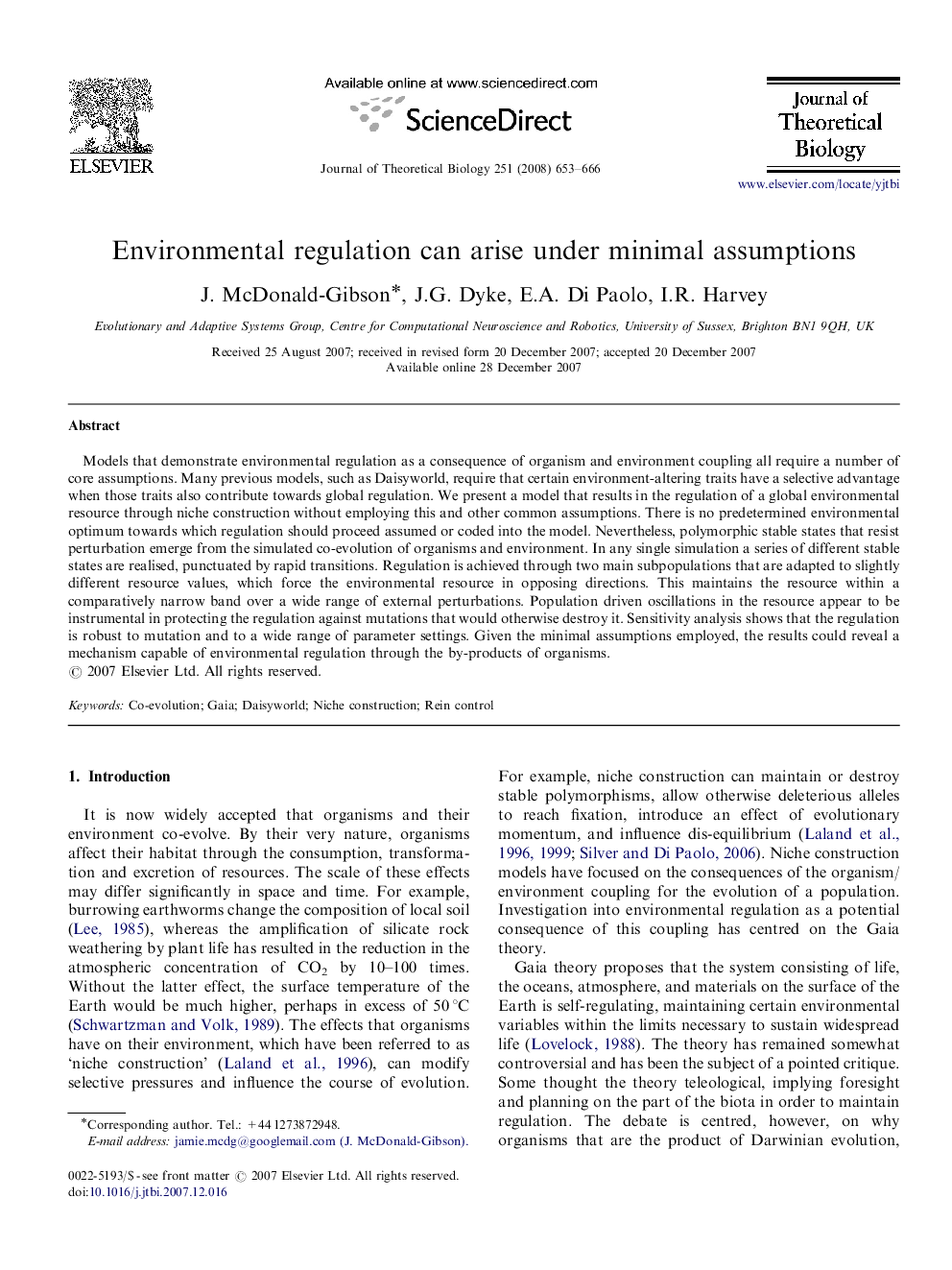| Article ID | Journal | Published Year | Pages | File Type |
|---|---|---|---|---|
| 4498485 | Journal of Theoretical Biology | 2008 | 14 Pages |
Models that demonstrate environmental regulation as a consequence of organism and environment coupling all require a number of core assumptions. Many previous models, such as Daisyworld, require that certain environment-altering traits have a selective advantage when those traits also contribute towards global regulation. We present a model that results in the regulation of a global environmental resource through niche construction without employing this and other common assumptions. There is no predetermined environmental optimum towards which regulation should proceed assumed or coded into the model. Nevertheless, polymorphic stable states that resist perturbation emerge from the simulated co-evolution of organisms and environment. In any single simulation a series of different stable states are realised, punctuated by rapid transitions. Regulation is achieved through two main subpopulations that are adapted to slightly different resource values, which force the environmental resource in opposing directions. This maintains the resource within a comparatively narrow band over a wide range of external perturbations. Population driven oscillations in the resource appear to be instrumental in protecting the regulation against mutations that would otherwise destroy it. Sensitivity analysis shows that the regulation is robust to mutation and to a wide range of parameter settings. Given the minimal assumptions employed, the results could reveal a mechanism capable of environmental regulation through the by-products of organisms.
